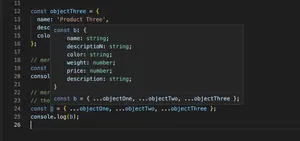Introduction
Utilizing browser storage is a key aspect of creating persistent, user-friendly web applications. This guide will walk you through integrating localStorage with TypeScript, unlocking robust, type-safe storage solutions.
Understanding localStorage
Before diving into TypeScript specifics, let’s first unpack what localStorage is. localStorage is a part of the Web Storage API, allowing you to store key-value pairs in a web browser with no expiration date. This data persists through page refreshes and browser restarts.
Example:
localStorage.setItem('key', 'value');
console.log(localStorage.getItem('key')); // Output: valueGeneric localStorage Functions in TypeScript
When using TypeScript, you benefit from having type information. Let’s start by creating simple, typed wrappers for localStorage.
function setItem<T>(key: string, value: T): void {
localStorage.setItem(key, JSON.stringify(value));
}
function getItem<T>(key: string): T | null {
const item = localStorage.getItem(key);
return item ? JSON.parse(item) as T : null;
}This basic example serializes and deserializes the data to and from JSON, adding a thin layer of type safety.
TypeScript Interfaces for Structured Data
Storing structured data greatly benefits from utilizing TypeScript interfaces to ensure consistent access.
interface UserPreferences {
darkMode: boolean;
fontSize: number;
}
// Save preferences
setItem<UserPreferences>('preferences', { darkMode: true, fontSize: 14 });
// Retrieve preferences
const preferences = getItem<UserPreferences>('preferences');Error Handling with Try/Catch
Dealing with storage might entail exceptions, for example when the storage quota is exceeded. Wrapping storage operations with try/catch blocks can aide in handling these scenarios gracefully.
try {
setItem('key', potentiallyLargeData);
} catch (e) {
console.error('Could not save data:', e);
}TypeGuard for localStorage Data
Adding an extra layer of safety, a TypeGuard confirms that the retrieved data is of the expected type.
function isUserPreferences(object: any): object is UserPreferences {
return 'darkMode' in object && 'fontSize' in object;
}
const rawData = getItem<unknown>('preferences');
if (isUserPreferences(rawData)) {
// rawData is now known to be UserPreferences
}Advanced Techniques
For more complex scenarios, you can employ techniques like versioning the storage schema, event-driven updates, and abstract classes for more complex storage patterns.
Schema Versioning
In case your data structure changes, version your schemas to avoid mismatches.
interface VersionedUserPreferences {
version: number;
preferences: UserPreferences;
}Event-driven updates: Listen to storage events to synchronize data.
window.addEventListener('storage', (event) => {
if (event.key === 'preferences') {
// Handle the updated preferences
}
});Abstract Storage Class: For complex scenarios, an abstract class can encapsulate storage logic.
abstract class StorageService<T> {
protected abstract getKey(): string;
protected abstract isCorrectType(object: any): object is T;
public save(value: T): void {
if (this.isCorrectType(value)) {
setItem(this.getKey(), value);
}
}
public load(): T | null {
const rawData = getItem<unknown>(this.getKey());
if (rawData && this.isCorrectType(rawData)) {
return rawData;
}
return null;
}
}This approach offers reusability and encapsulation across different parts of your application.
Conclusion
By combining localStorage with TypeScript’s typing system, you create a resilient and reliable browser storage solution for your web applications. The use of interfaces, type guards, and error handling can significantly enhance the functionality and maintainability of your storage-related code. Lean on these techniques to bring your data handling to new levels of sophistication.
